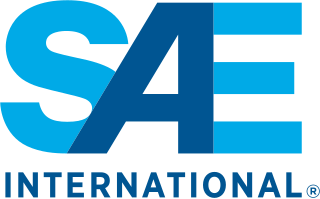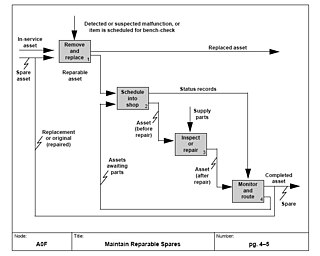The Rational Unified Process (RUP) is an iterative software development process framework created by the Rational Software Corporation, a division of IBM since 2003. RUP is not a single concrete prescriptive process, but rather an adaptable process framework, intended to be tailored by the development organizations and software project teams that will select the elements of the process that are appropriate for their needs. RUP is a specific implementation of the Unified Process.
Software development is the process of conceiving, specifying, designing, programming, documenting, testing, and bug fixing involved in creating and maintaining applications, frameworks, or other software components. Software development involves writing and maintaining the source code, but in a broader sense, it includes all processes from the conception of the desired software through to the final manifestation of the software, typically in a planned and structured process. Software development also includes research, new development, prototyping, modification, reuse, re-engineering, maintenance, or any other activities that result in software products.

In systems engineering and software engineering, requirements analysis focuses on the tasks that determine the needs or conditions to meet the new or altered product or project, taking account of the possibly conflicting requirements of the various stakeholders, analyzing, documenting, validating and managing software or system requirements.

In systems engineering, information systems and software engineering, the systems development life cycle (SDLC), also referred to as the application development life-cycle, is a process for planning, creating, testing, and deploying an information system. The systems development life cycle concept applies to a range of hardware and software configurations, as a system can be composed of hardware only, software only, or a combination of both. There are usually six stages in this cycle: requirement analysis, design, development and testing, implementation, documentation, and evaluation.

In industry, Product Lifecycle Management (PLM) is the process of managing the entire lifecycle of a product from its inception through the engineering, design and manufacture, as well as the service and disposal of manufactured products. PLM integrates people, data, processes and business systems and provides a product information backbone for companies and their extended enterprises.
Structured Systems Analysis and Design Method (SSADM) is a systems approach to the analysis and design of information systems. SSADM was produced for the Central Computer and Telecommunications Agency, a UK government office concerned with the use of technology in government, from 1980 onwards.
Failure mode and effects analysis is the process of reviewing as many components, assemblies, and subsystems as possible to identify potential failure modes in a system and their causes and effects. For each component, the failure modes and their resulting effects on the rest of the system are recorded in a specific FMEA worksheet. There are numerous variations of such worksheets. An FMEA can be a qualitative analysis, but may be put on a quantitative basis when mathematical failure rate models are combined with a statistical failure mode ratio database. It was one of the first highly structured, systematic techniques for failure analysis. It was developed by reliability engineers in the late 1950s to study problems that might arise from malfunctions of military systems. An FMEA is often the first step of a system reliability study.
Software prototyping is the activity of creating prototypes of software applications, i.e., incomplete versions of the software program being developed. It is an activity that can occur in software development and is comparable to prototyping as known from other fields, such as mechanical engineering or manufacturing.
Reliability engineering is a sub-discipline of systems engineering that emphasizes the ability of equipment to function without failure. Reliability describes the ability of a system or component to function under stated conditions for a specified period of time. Reliability is closely related to availability, which is typically described as the ability of a component or system to function at a specified moment or interval of time.

The Department of Defense Architecture Framework (DoDAF) is an architecture framework for the United States Department of Defense (DoD) that provides visualization infrastructure for specific stakeholders concerns through viewpoints organized by various views. These views are artifacts for visualizing, understanding, and assimilating the broad scope and complexities of an architecture description through tabular, structural, behavioral, ontological, pictorial, temporal, graphical, probabilistic, or alternative conceptual means. The current release is DoDAF 2.02.

The systems architect is an information and communications technology professional. Systems architects define the architecture of a computerized system in order to fulfill certain requirements. Such definitions include: a breakdown of the system into components, the component interactions and interfaces, and the technologies and resources to be used in its design and implementation.

ARP4761, Guidelines and Methods for Conducting the Safety Assessment Process on Civil Airborne Systems and Equipment is an Aerospace Recommended Practice from SAE International. In conjunction with ARP4754, ARP4761 is used to demonstrate compliance with 14 CFR 25.1309 in the U.S. Federal Aviation Administration (FAA) airworthiness regulations for transport category aircraft, and also harmonized international airworthiness regulations such as European Aviation Safety Agency (EASA) CS–25.1309.
RTCA DO-254 / EUROCAE ED-80, Design Assurance Guidance for Airborne Electronic Hardware is a document providing guidance for the development of airborne electronic hardware, published by RTCA, Incorporated and EUROCAE. The DO-254/ED-80 standard was formally recognized by the FAA in 2005 via AC 20-152 as a means of compliance for the design assurance of electronic hardware in airborne systems. The guidance in this document is applicable, but not limited, to such electronic hardware items as
A system architecture is the conceptual model that defines the structure, behavior, and more views of a system. An architecture description is a formal description and representation of a system, organized in a way that supports reasoning about the structures and behaviors of the system.
Enterprise information security architecture (ZBI) is a part of enterprise architecture focusing on information security throughout the enterprise. The name implies a difference that may not exist between small/medium-sized businesses and larger organizations.
The engineering design process is a common series of steps that engineers use in creating functional products and processes. The process is highly iterative - parts of the process often need to be repeated many times before another can be entered - though the part(s) that get iterated and the number of such cycles in any given project may vary.

In systems engineering, software engineering, and computer science, a function model or functional model is a structured representation of the functions within the modeled system or subject area.
In the United States military integrated acquisition lifecycle the Technical section has multiple acquisition "Technical Reviews". Technical reviews and audits assist the acquisition and the number and types are tailored to the acquisition. Overall guidance flows from the Defense Acquisition Guidebook chapter 4, with local details further defined by the review organizations. Typical topics examined include adequacy of program/contract metrics, proper staffing, risks, budget, and schedule.
ISO 26262, titled "Road vehicles – Functional safety", is an international standard for functional safety of electrical and/or electronic systems that are installed in serial production road vehicles, defined by the International Organization for Standardization (ISO) in 2011, and revised in 2018.
Low-level design (LLD) is a component-level design process that follows a step-by-step refinement process. This process can be used for designing data structures, required software architecture, source code and ultimately, performance algorithms. Overall, the data organization may be defined during requirement analysis and then refined during data design work. Post-build, each component is specified in detail.






